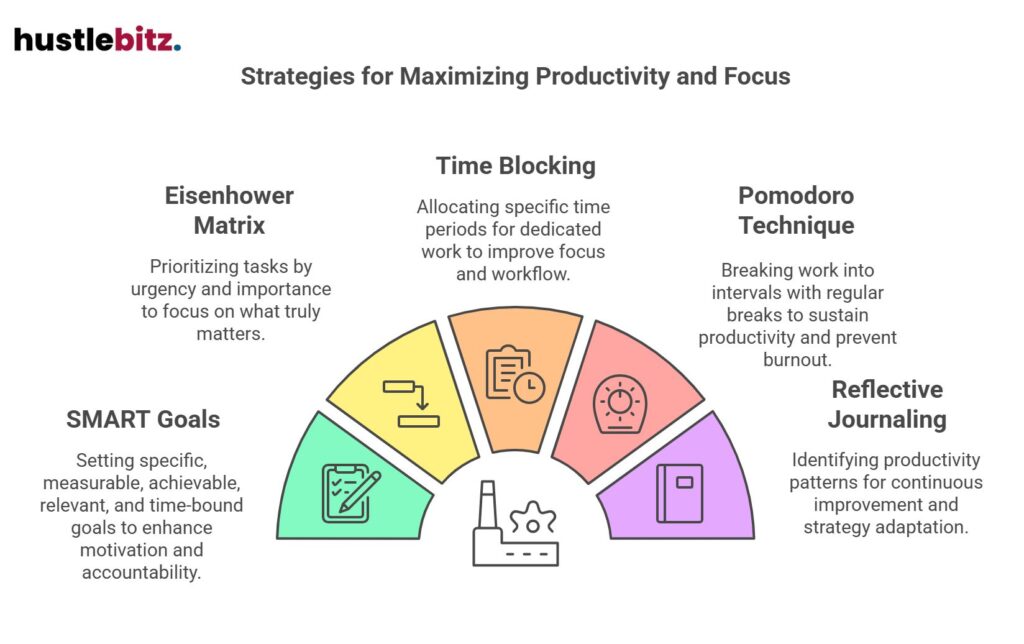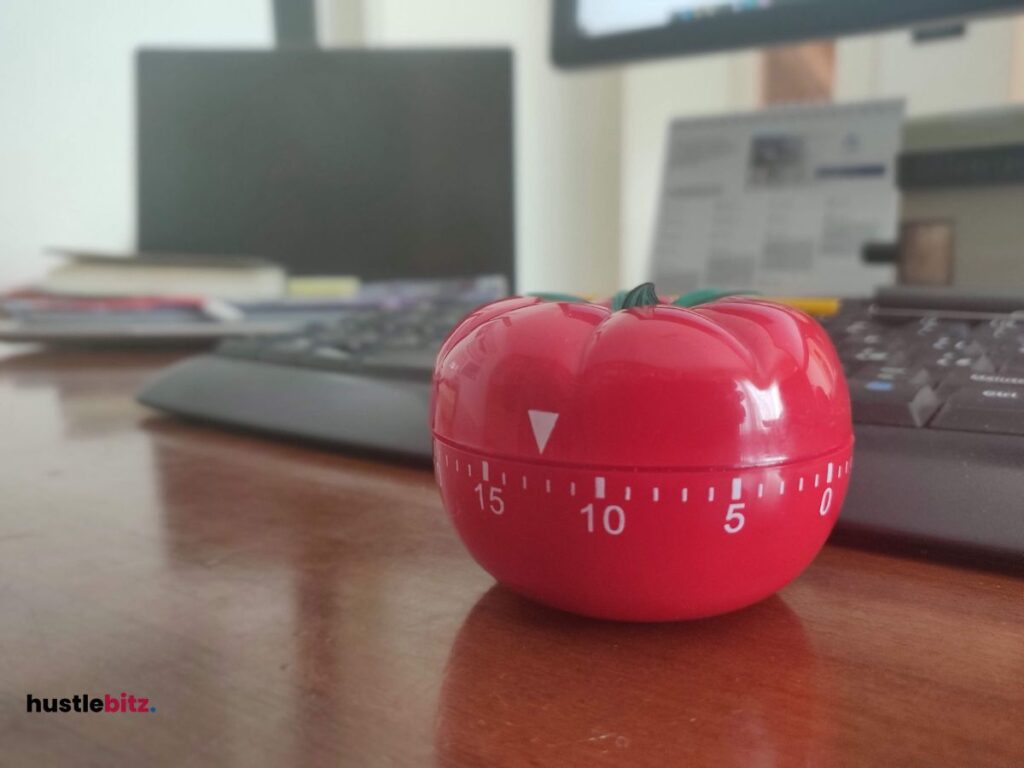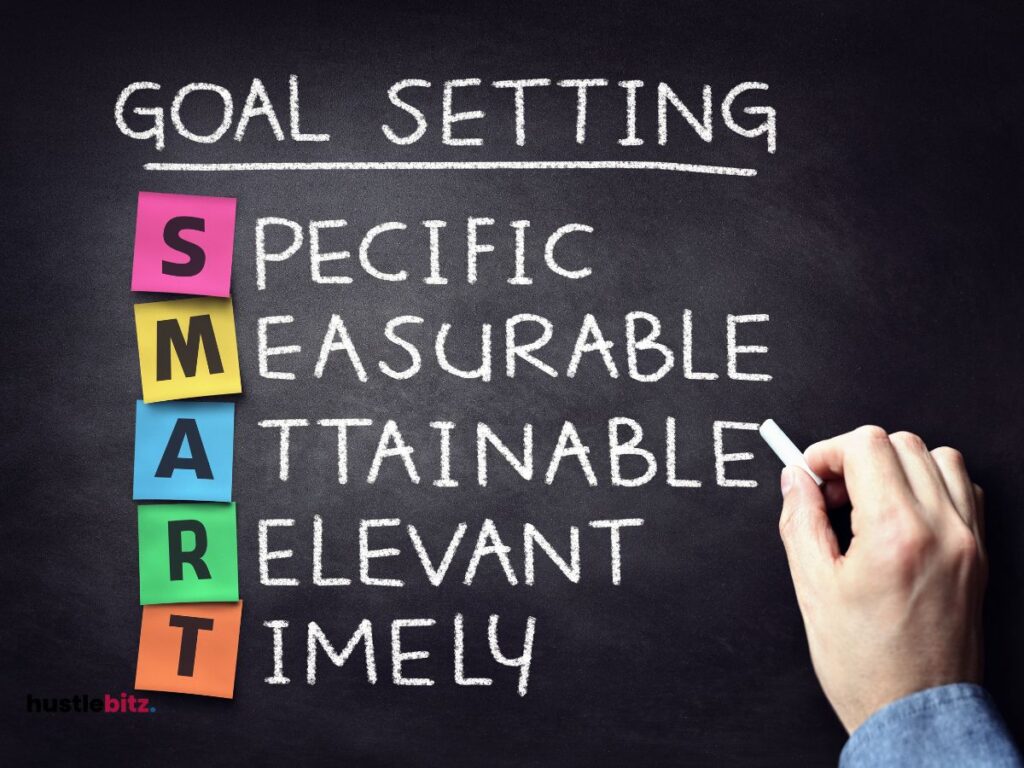To boost your daily output, consider implementing proven productivity hacks. Begin by setting SMART goals to create a clear framework for your tasks. Utilize the Eisenhower Matrix to prioritize your responsibilities effectively. Incorporate time blocking for focused work sessions and adopt the Pomodoro Technique to maintain momentum. Regular breaks are vital for sustaining energy levels, while the Two-Minute Rule helps tackle small tasks immediately, reducing mental clutter. Additionally, minimizing digital distractions through mindful technology use can enhance concentration. These strategies provide a solid foundation for productivity enhancement, with additional techniques available for further improvement and refinement.
Key Takeaways
- Set SMART goals to create clear, achievable objectives that enhance motivation and accountability in your daily tasks.
- Utilize the Eisenhower Matrix to prioritize tasks by urgency and importance, ensuring you focus on what truly matters.
- Implement time blocking to allocate specific periods for dedicated work, improving focus and optimizing your workflow.
- Practice the Pomodoro Technique to break work into intervals, fostering sustained productivity and preventing burnout through regular breaks.
- Engage in reflective journaling to identify productivity patterns, allowing for continuous improvement and adaptation of your strategies.

Productivity Hacks for Daily Success

Implementing effective productivity hacks can transform your daily routine, enabling you to maximize efficiency and achieve your goals with greater ease.
One essential element of daily success is goal setting. By establishing clear, achievable objectives, you create a focused framework that guides your actions throughout the day.
Integrating structured morning routines can further enhance your productivity. Start the day with activities that energize and motivate, such as mindfulness exercises or physical workouts, which foster positive mindset shifts.
Additionally, effective energy management throughout the day is crucial; identify your peak performance times and schedule demanding tasks accordingly.
Workspace organization plays a pivotal role in maintaining clarity and focus. A clutter-free environment minimizes distractions and facilitates task delegation, allowing you to collaborate effectively with others.
Consider engaging with accountability partners who can help keep you on track and motivated in pursuing your objectives.
Incorporating self-reflection sessions at the end of each day is invaluable for assessing your progress and making necessary adjustments. This practice allows you to celebrate small wins and recognize areas for improvement.
Positive affirmations can reinforce your commitment to your goals and enhance your overall mindset.
Prioritize Your Tasks with the Eisenhower Matrix
An effective way to further enhance your productivity is by prioritizing tasks using the Eisenhower Matrix, a tool that distinguishes between urgency and importance to streamline decision-making. This decision matrix divides tasks into four Eisenhower quadrants: urgent and important, important but not urgent, urgent but not important, and neither urgent nor important. By categorizing your tasks accordingly, you can gain clarity of purpose and focus on what truly matters.
Utilizing prioritization techniques from the Eisenhower Matrix allows for improved time management and goal setting. Tasks that fall into the urgent and important quadrant should be addressed immediately, while those classified as important but not urgent can be scheduled for later. Conversely, tasks that are urgent but not important can often be delegated, fostering effective delegation and reducing your workload.
Employing this framework not only enhances productivity but also promotes stress reduction. By clearly identifying which tasks require immediate attention and which can be postponed or delegated, you can minimize the feeling of being overwhelmed. The Eisenhower Matrix encourages strategic planning, enabling you to allocate your time and resources more effectively.
Ultimately, the Eisenhower Matrix serves as a powerful tool to enhance your daily output. By implementing this approach, you can streamline your workflow, prioritize effectively, and achieve your goals with greater efficiency.
Harness the Power of Time Blocking for Focused Work
Time blocking is a strategic approach that allocates specific periods for focused work, allowing individuals to manage their time more effectively and enhance productivity. By structuring your day into designated focus periods, you can achieve significant time blocking benefits, such as improved workflow optimization and better energy management.
An effective scheduling technique like time blocking facilitates task batching, which aligns tasks with your peak productivity times. This method promotes deep work, enabling you to concentrate on significant projects without the interruptions that typically fragment your focus. Furthermore, establishing a routine through time blocking fosters goal alignment, ensuring that daily activities contribute to your overarching objectives.
To illustrate the benefits of time blocking, consider the following table:
| Focus Period | Activity Type | Duration | Energy Level | Notes |
| Morning Block | Deep Work | 2 hours | High | Prioritize critical tasks |
| Mid-Morning Block | Task Batching | 1 hour | Moderate | Group similar tasks together |
| Afternoon Block | Meetings/Calls | 1.5 hours | Low | Limit distractions |
| Late Afternoon Block | Routine Tasks | 1 hour | Moderate | Respond to emails |
| End of Day Block | Reflection/Planning | 30 minutes | Low | Assess progress and plan |
Creating distraction-free zones during these blocks allows for uninterrupted focus, leading to a more productive and satisfying work experience.
Minimize Distractions with Digital Detox Techniques

To enhance productivity, incorporating digital detox techniques can significantly minimize distractions and foster a more focused work environment. In today’s technology-driven landscape, digital distractions—such as incessant notifications from social media and email—can impede our ability to concentrate. To combat this, establishing tech boundaries is essential. Designate specific times for checking messages and limit social media usage to create a healthier relationship with technology.
Implementing focus techniques, such as mindful technology use, can also be invaluable. This involves consciously choosing when and how to engage with devices, prioritizing activities that promote productivity over mindless scrolling. Creating device-free zones in your home or workspace encourages screen-free time, allowing for uninterrupted periods that boost creativity and concentration.
Adopting principles of digital minimalism can further enhance attention management. This philosophy advocates for the intentional use of technology, urging individuals to eliminate unnecessary apps and notifications that clutter the digital space. A smartphone detox, where you temporarily disconnect from your device, can provide the mental clarity needed to refocus on your goals.
Lastly, consider scheduling regular breaks from screens, giving your mind the chance to recharge. By integrating these digital detox techniques into your daily routine, you will cultivate a more productive environment, enabling you to harness your full potential and achieve your objectives effectively.
Leverage the Pomodoro Technique for Consistent Productivity

Utilizing the Pomodoro Technique can significantly enhance productivity by breaking work into manageable intervals, allowing for regular breaks that help maintain focus and motivation. This method not only fosters mental clarity but also promotes a work rhythm conducive to sustained concentration. By employing timer effectiveness, individuals can create structured focus intervals, leading to productivity spikes and more efficient task completion.
The Pomodoro Technique offers several key benefits:
- Enhanced Focus: Short bursts of concentrated work reduce distractions and improve overall focus.
- Stress Reduction: Regular breaks help alleviate pressure, making the workday more manageable.
- Motivation Boost: Completing tasks within defined intervals instills a sense of accomplishment, fueling motivation.
- Increased Mental Clarity: Frequent breaks allow the brain to reset, leading to clearer thinking and better decision-making.
- Workflow Optimization: Structuring work into intervals helps identify peak productivity times, enabling better planning.
Incorporate Regular Breaks to Maintain High Energy Levels

Incorporating regular breaks into the workday is essential for sustaining high energy levels and enhancing overall productivity. Research suggests that strategically timed breaks can significantly improve performance by allowing for energy restoration and cognitive recharge. Establishing an optimal break frequency helps individuals avoid burnout and maintain focus throughout the day.
Movement breaks, for instance, can refresh both body and mind, promoting physical well-being while also facilitating mental clarity. Simple stretches or a brief walk can stimulate blood circulation, providing a physical reset that enhances focus enhancement. Additionally, mindfulness moments—such as deep breathing or meditation—served during breaks can reduce stress levels, fostering a calm mental state conducive to creativity boosts.
During peak productivity periods, it is crucial to recognize when to pause. Taking breaks at regular intervals not only helps maintain high energy levels but also aligns with the natural rhythm of attention spans, allowing for sustained engagement. These intervals are ideal for reflection and regrouping, enabling professionals to return to tasks with renewed vigor.
Ultimately, incorporating breaks into the work routine is not merely a luxury but a necessity for optimal performance. By prioritizing these moments of rest, individuals can harness the power of energy restoration, ensuring they remain productive and engaged throughout their workday. Embracing this practice will lead to improved outcomes and a more fulfilling work experience overall.
Practice the Two-Minute Rule

Maintaining high productivity can also be achieved by practicing the Two-Minute Rule, which encourages individuals to tackle tasks that can be completed in two minutes immediately rather than postponing them. This approach not only aids in overcoming procrastination but also fosters momentum building and enhances overall efficiency. By addressing two-minute tasks right away, you can experience instant productivity and make significant strides in your daily output.
Implementing the Two-Minute Rule can transform your time management strategy through actionable steps that prioritize quick decisions and short commitments. Consider the following tasks that can typically be accomplished in two minutes:
- Responding to a brief email
- Organizing your workspace
- Making a quick phone call
- Updating a to-do list
- Throwing out unnecessary items
By incorporating these quick tasks into your routine, you can reduce clutter in both your mind and environment, allowing for better task prioritization. The cumulative effect of completing numerous two-minute tasks can lead to substantial efficiency boosts throughout your day.
Additionally, the practice of addressing these small tasks immediately helps build a habit of swift decision-making, ultimately leading to a more productive mindset. By harnessing the power of the Two-Minute Rule, you can effectively manage your time while cultivating an environment conducive to success. The simplicity and effectiveness of this rule make it a powerful ally in your quest for improved productivity.
Set SMART Goals to Keep Your Daily Output on Track

Setting SMART goals can significantly enhance your ability to stay focused and boost your daily productivity. SMART is an acronym that stands for Specific, Measurable, Achievable, Relevant, and Time-bound. This framework for goal setting ensures that you establish clear objectives, making it easier to identify specific targets and actionable steps needed to achieve them.
By defining measurable outcomes, you can evaluate your progress effectively. For instance, instead of setting a vague goal like ‘improve my writing,’ specify that you will write 500 words a day for a month. Incorporating timeframes set for each goal further solidifies your commitment and creates a sense of urgency.
Utilizing motivation techniques, such as visualizing your desired outcome, can enhance your drive to meet your goals. Furthermore, consider enlisting accountability partners who can provide support and encouragement throughout your journey. Regular check-ins with these partners can help maintain your focus and drive.
Progress tracking is essential in the SMART goal-setting process. Implementing review sessions allows you to assess your accomplishments and identify areas for improvement. If you encounter obstacles, adaptability strategies will enable you to adjust your goals without losing sight of your overall objectives.
Continuously Improve Your Productivity Strategies

Achieving productivity through SMART goals lays the foundation for a mindset focused on continuous improvement of your strategies. This mindset shift is essential for adapting to new challenges and maximizing efficiency. By incorporating various techniques, you can enhance your productivity on an ongoing basis.
Here are five effective strategies:
- Reflective Journaling: Regularly document your thoughts and progress to identify patterns in your productivity, helping you understand what works and what doesn’t.
- Accountability Partners: Collaborate with peers who can offer support and constructive feedback, ensuring that you stay committed to your goals.
- Task Delegation: Learn to delegate tasks effectively to optimize workflow, allowing you to focus on high-priority responsibilities.
- Energy Management: Recognize your peak productivity times and schedule demanding tasks accordingly, leveraging your natural energy cycles.
- Continuous Learning: Engage in ongoing education and skill development to stay updated on best practices and innovative strategies.
Additionally, goal visualization can reinforce your objectives, while self-assessment promotes a deeper understanding of your strengths and weaknesses.
By focusing on habit formation and workflow optimization, you can create a sustainable productivity framework. With these strategies, you’ll not only improve your daily output but also create a culture of continuous improvement that propels you toward success.
Embrace the process of learning and adapting to ensure that your productivity strategies evolve alongside your personal and professional growth.
Final Thoughts
Boosting your daily output requires a combination of effective strategies and continuous improvement. By setting SMART goals, prioritizing tasks with the Eisenhower Matrix, and utilizing time blocking and the Pomodoro Technique, you can create a structured and focused approach to your work. Regular breaks, the Two-Minute Rule, and minimizing digital distractions are essential for maintaining energy and productivity throughout the day. Embrace these techniques, and continuously refine your methods to ensure long-term success in both your personal and professional endeavors. Remember, productivity is a journey—stay committed to evolving your strategies as you grow.




